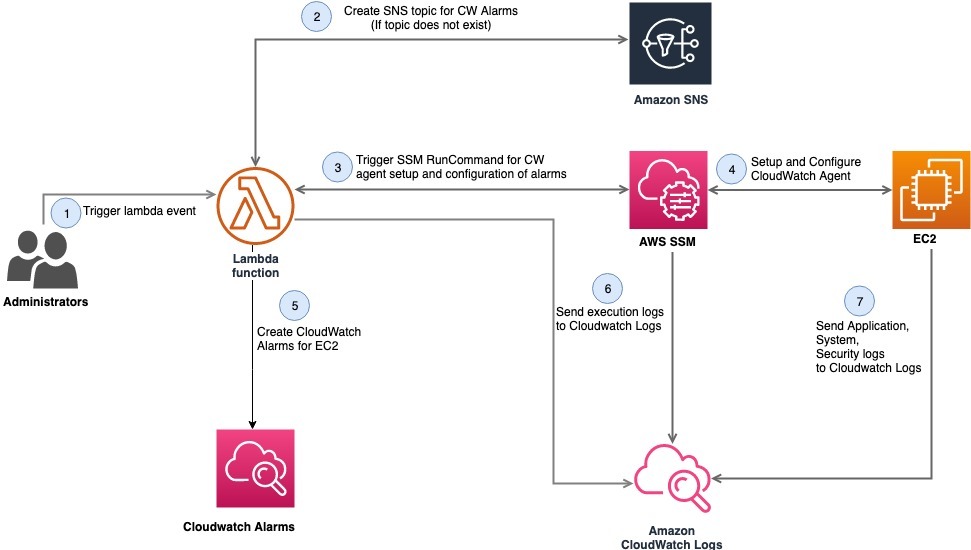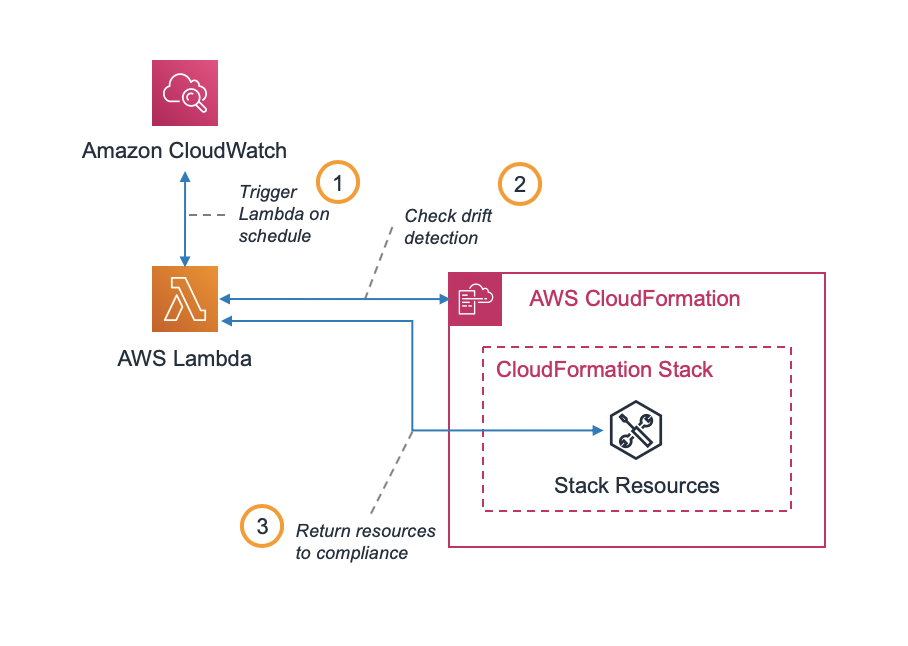AWS Cloud Operations & Migrations Blog
Tag: Automation
Use AWS Control Tower lifecycle events to automate configuration of AWS accounts for ServiceNow IT operations management
Several organizations that I work with use ServiceNow’s IT Operations management capabilities for their on-premises infrastructure and want to leverage the same capabilities for their AWS environment as well. Some of the core capabilities of ServiceNow’s IT Operations management are ServiceNow Discovery, Event Management and Cloud Management. Currently, customers who want to enable ServiceNow’s Cloud […]
Use tags to create and maintain Amazon CloudWatch alarms for Amazon EC2 instances (Part 1)
This blog post is the first in a two-part series. I walk you through a solution to automatically create and enforce a standard set of Amazon CloudWatch metric alarms for Amazon Elastic Compute Cloud (Amazon EC2) instances by using Amazon EC2 instance tags. Creating and configuring a standard set of CloudWatch alarms for a large […]
Use tags to create and maintain Amazon CloudWatch alarms for Amazon EC2 instances (Part 2)
This blog post is the second in a two-part series. Part one of this blog post showed how to deploy and configure the CloudWatchAutoAlarms Lambda function to create a default alarm set and custom alarms for your Amazon Elastic Compute Cloud (Amazon EC2) instances using EC2 instance tags. In this post, I show how you […]
Building secure Amazon SageMaker access URLs with AWS Service Catalog
Many customers need a secure method to access Amazon SageMaker notebooks within their private network without logging in to the AWS console, or using the AWS CLI/SDKs. This may be desired for enhanced security or to provide an easier self-service path for data scientists. In this blog post, we show you a how to connect […]
Launch a standardized DevOps pipeline to deploy containerized applications using AWS Service Catalog
As companies implement DevOps practices, they find that standardizing the deployment of the continuous integration and continuous deployment (CI/CD) pipelines is increasingly important. Many end users and developers do not have the ability or time to create their own CI/CD pipelines and processes from scratch for each new project. By using AWS Service Catalog, organizations […]
Customizing account configuration with AWS Control Tower lifecycle events
In this blog post, we show how to customize the networking configuration in an AWS account. For example by deleting the default VPCs in all AWS Regions, using AWS Resource Access Manager to share the appropriate VPC subnets and using AWS Firewall Manager to apply security groups to VPCs in the account.
Automating Amazon CloudWatch Alarms with AWS Systems Manager
Amazon CloudWatch is a monitoring and observability service built for DevOps engineers, developers, Site Reliability Engineers (SRE), and IT managers. CloudWatch provides you with data and actionable insights to monitor your applications, respond to system-wide performance changes, optimize resource utilization, and get a unified view of operational health. Are you looking for an automated way […]
VPC Flow Log automation using AWS Control Tower LifeCycle
In this blog post, I show you how to expand AWS Control Tower centralized logging strategy to cover Amazon VPC Flow Logs. Using this solution, you can manage VPC Flow Logs across multiple accounts with self-service automation and periodic consistency check.
Implement automatic drift remediation for AWS CloudFormation using Amazon CloudWatch and AWS Lambda
“Stack drift” is a common occurrence for organizations using AWS CloudFormation, and remediating stack drift represents a persistent and tedious challenge for organizations managing critical infrastructure with CloudFormation stacks. Stack drift occurs when the actual configuration of an infrastructure resource differs from its expected configuration. Typically, this is caused by users editing resources directly by […]
Keeping Ansible effortless with AWS Systems Manager
Ansible is a powerful tool because it lets you handle many complicated tasks with minimal effort. Some time ago, I published running Ansible playbooks using Systems Manager blog when the first version of the AWS Systems Manager (SSM) document was released, which enabled support for Ansible. In that blog, I discussed the tight integration of […]









